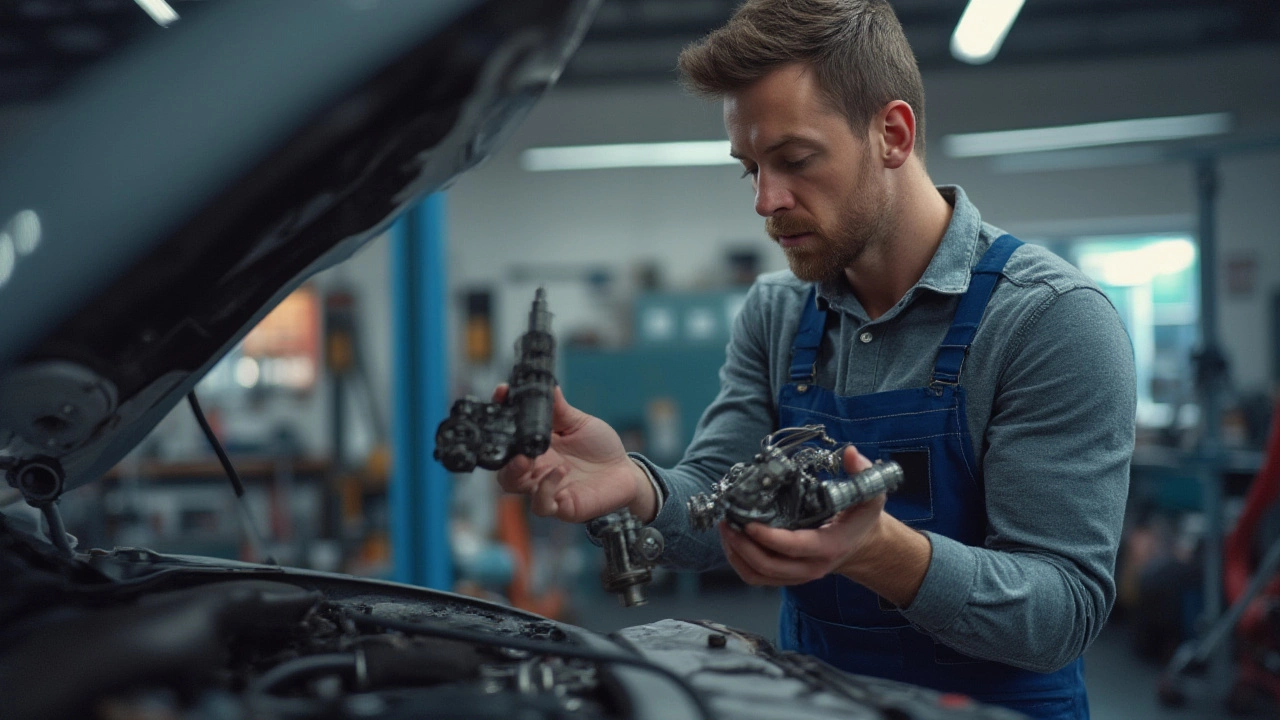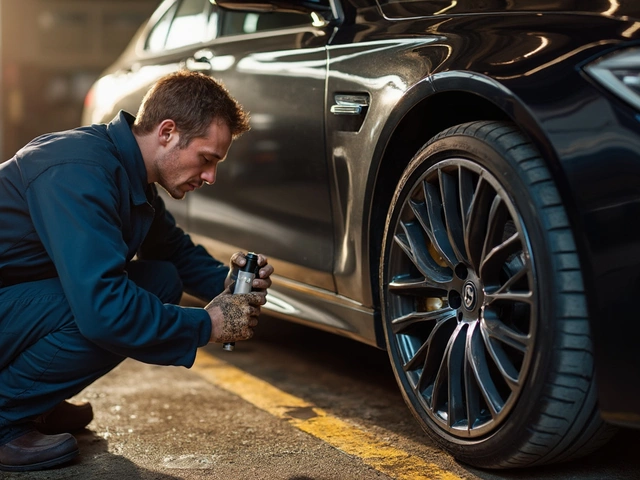If you’ve been banging over potholes or driving with a noisy, loose suspension, you probably wondered if things deeper under the hood might pay the price. Most drivers see suspension and engine as two totally different worlds. One’s about a smooth ride, the other is all horsepower and torque. But here’s the twist: poor suspension can quietly mess with your engine’s life and performance, especially if ignored for too long. It’s like having one weak link in a chain—eventually, the trouble spreads.
How Suspension and Engine Systems Are Linked
At first glance, the car’s suspension and engine don’t look like they’d have much in common. But take a closer look at how they’re built into a modern car. The engine sits mounted to the chassis, which connects to the wheels via the suspension system. The whole idea of suspension is to keep your car stable and tires pressed evenly to the road, even when things get bumpy.
If your suspension is worn out, your car shakes more and jolts violently every time you hit a bump. That vibration doesn’t just shake your coffee cup. It’s felt by all the components attached to the chassis—engine included. That’s when the trouble starts brewing.
Consider the engine mounts, for example. Their whole job is to cushion the engine and keep it in place, absorbing routine vibration. When the suspension starts to fail, these mounts get battered beyond their design. The engine might start to move more than it should, creating stress fractures or early wear in places you can’t see. The rubber in the mounts can crack, turning small shakes into big ones. And that’s just the beginning. Even drive belts, hoses, and wiring can experience accelerated wear if every little bump turns into a sledgehammer blow.
Automotive engineers pay serious attention to this chain reaction. A Mercedes study from 2018, for example, found that chronic suspension wear increased secondary engine vibrations by as much as 19%. That doesn’t just make the engine noisy—it can eventually lead to misalignment, extra friction, and a higher likelihood of small failures over time. To put it plainly: if you don’t keep your suspension healthy, your engine’s comfort zone keeps shrinking until something lets go.
What Can Go Wrong When Suspension Is Neglected?
When your suspension system’s in rough shape, things get worse for the engine way faster than most think. Start with the engine mounts taking a beating, but it spirals into a bunch of other issues. One major thing is vibration: a bouncy, unstable car is like living on a jackhammer. All that shock gets transferred through the drivetrain and straight into the engine block.
With enough shaking, more than engine mounts give up—fasteners can work loose, wiring connections wiggle free, and sensors go haywire. That means all kinds of warning lights might pop up. Those electrical interruptions aren’t just annoying—they can cause real damage if the engine computer gets unreliable signals, or a sensor stops reporting altogether.
Then, there’s the wear and tear on moving engine parts. Suspension isn’t just about comfort; it’s also about keeping your wheel alignment correct. When your shocks, struts, or bushings are worn and wheel alignment drifts out, the entire car’s geometry gets thrown off. That makes the engine work harder every time you turn—now it has to fight more resistance through power steering and the drivetrain, wasting energy and shortening the lifespan of belts and pulleys.
Let’s not forget the exhaust and cooling systems, which are physically bolted to the car’s frame. When your suspension gives up, these systems get flexed and pushed in unnatural ways. Pretty soon, you’re dealing with leaky exhausts, cracked manifolds, or busted coolant pipes—none of which are cheap to fix.
Modern cars have so many interconnected parts that issues move like dominoes. Audi technicians often trace chronic oil leaks, shaky idles, or rough start problems back to ignored suspension repairs. There’s even a running joke in some garages: “Solve the wheels, and the engine will thank you.”

Signs Your Suspension Might Be Hurting Your Engine
So, what should you look for if you suspect your shaky suspension is causing engine headaches? The first clue is usually noise: rattles, clunks, or knocking from under the hood that weren’t there before. Don’t tune them out. That’s the sound of mounts, brackets, or other engine supports straining more than they should.
Next, check for engine vibration or roughness that gets worse over bumps or when turning. If you notice new shaking at idle or while accelerating, especially after hitting potholes, investigate the suspension before blaming the engine.
Dashboard lights are red flags too. If your check engine light appears alongside ABS or stability control warnings, there’s a good chance unrelated systems are struggling together. Sensors for these systems are often mounted near—or even on—suspension components!
Ever popped the hood and found leaking fluids from odd places, or weird exhaust smells? Suspension-related misalignment can tug hoses, pipes, or seals out of position, creating new leaks from the engine or exhaust system. Strange, patchy tire wear is another sign—if you see it, your wheels aren’t connecting with the road correctly and that’s putting extra, uneven loads onto the powertrain.
- Chronic harsh ride or bouncy drive
- Steering feels loose or “wanders” left/right
- Unexplained engine noise
- Frequent sensor malfunctions
- Fluids dripping after bumps
There’s a cold hard fact from a 2021 Ford Tech Bulletin: cars with unresolved suspension problems show up to 25% more often for unrelated engine service within 18 months. Small issues snowball fast, especially in cities with rough roads.
How to Prevent Engine Issues from Suspension Problems
The good news? Keeping your engine happy starts with regular suspension checkups. Don’t wait for squeaks or a miserable ride to get things looked at—catching small problems early saves cash, hassle, and downtime.
Have your mechanic check bushings, ball joints, shocks, and struts at least every 20,000 miles or each year. If you do a lot of city driving or up north where roads are rough, do it every six months. Insist on a full wheel alignment check as well. Getting your wheels lined up right reduces resistance, helps the engine run smoother, and lets brakes and steering work as designed.
Review tire tread (and pressure!) monthly. Uneven wear patterns—sometimes called “cupping” or “feathering”—mean the suspension isn’t keeping rubber in contact with the road the way it should. That’s usually your first visible warning that the engine could be next in line for trouble.
If you notice new noises, rough idles, or just a more jittery ride, get to a professional. Don’t crank up the music and ignore it—small stuff grows into expensive fixes fast. And if you ever replace the engine mounts, do the suspension inspection at the same time. Most experienced techs say changing only one set leads to early failure of the new parts.
Here’s where numbers speak for themselves. Check out this quick comparison from a survey done by AAA in 2022:
| Condition | Engine-related Repairs Needed Per Year (%) |
|---|---|
| Healthy suspension | 8 |
| Minor suspension wear | 17 |
| Major suspension neglect | 24 |
Treat your suspension like you treat your oil changes, and your engine will keep humming along for the long haul. Simple, right?

Smart Upgrades and Maintenance Tricks
If you really want to give your engine and suspension a longer, easier life, a few smart upgrades and habits can help. Consider switching to heavy-duty suspension parts if you drive over rough roads every day. Performance shocks, polyurethane bushings, and reinforced mounts cost more upfront, but they outlast standard parts and soak up more abuse.
Don’t forget about the tires—investing in quality tires with a suitable load rating and keeping them inflated to spec eases the workload on both your engine and suspension. If your car is approaching 100,000 miles and you’ve never upgraded engine mounts, it could be time. Poly or hydraulic mounts cut vibration better and last longer than the OEM rubber. Just make sure you buy mounts with the same or better quality than the originals!
Another pro tip? Keep the undercarriage clean, especially if you deal with mud, snow, and road salt. Rust eats away at suspension arms, mounts, and chassis points that secure the engine. Spraying off the bottom of your car every couple of weeks in winter can help prevent silent corrosion that leads to bigger problems.
And finally—keep records. Track every knock, every repair, every upgrade. If your new mount starts creaking or you notice a pattern in engine or suspension issues, showing your mechanic the timeline can help them spot deeper connections that aren’t obvious at first glance.
The bottom line is you can’t treat your suspension and engine as totally separate. Problems in one ripple into the other, usually sooner than expected. Keep both strong and you’ll drive with fewer breakdowns, less hassle, and max life from every dollar you put under the hood.
You don’t have to be a car nut or professional mechanic to spot when your ride feels off. Trust your senses, look after all parts equally, and remember: it’s not just about comfort—your engine’s counting on a strong suspension, too.








